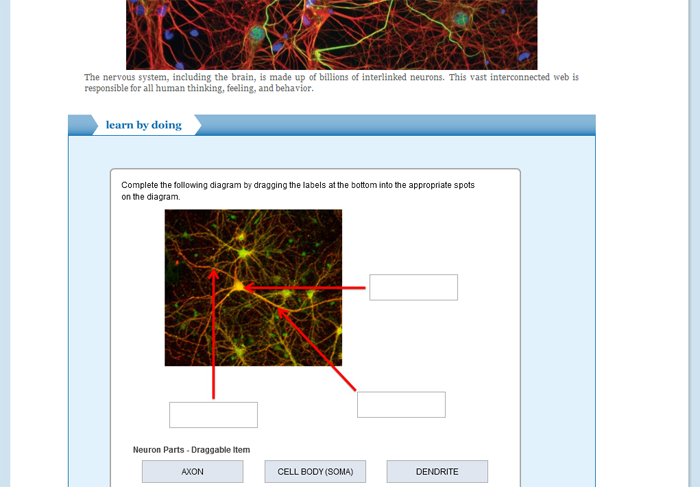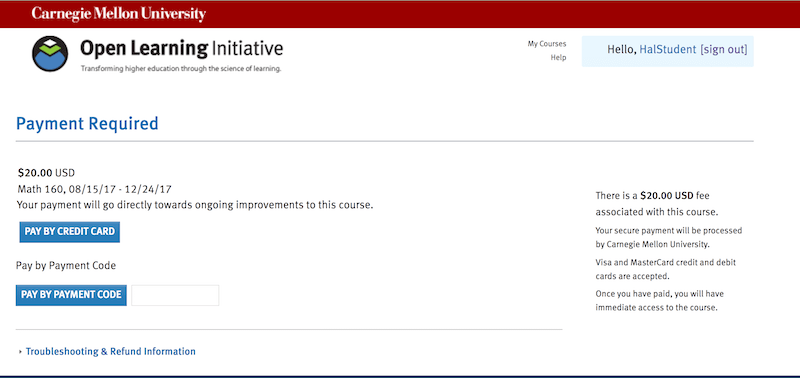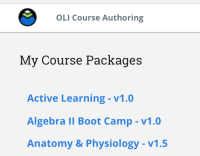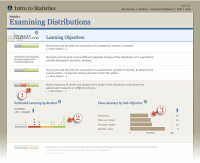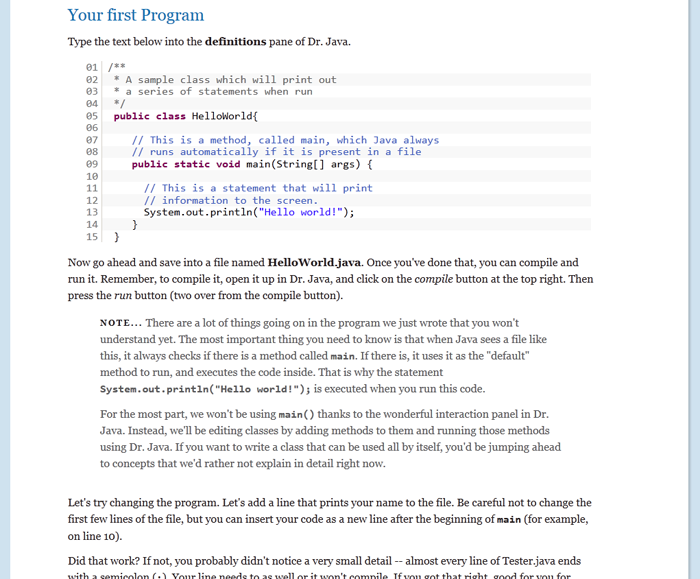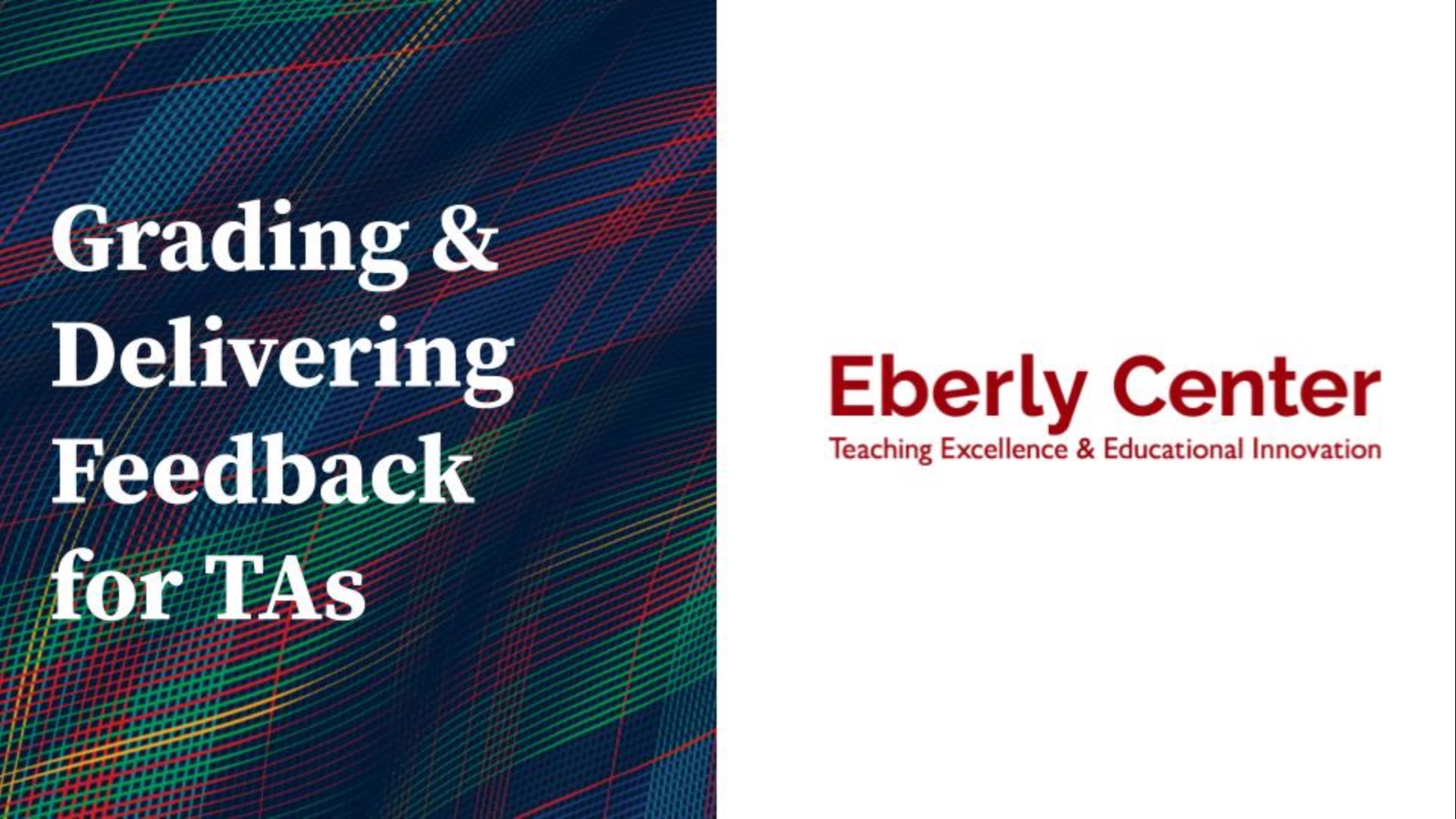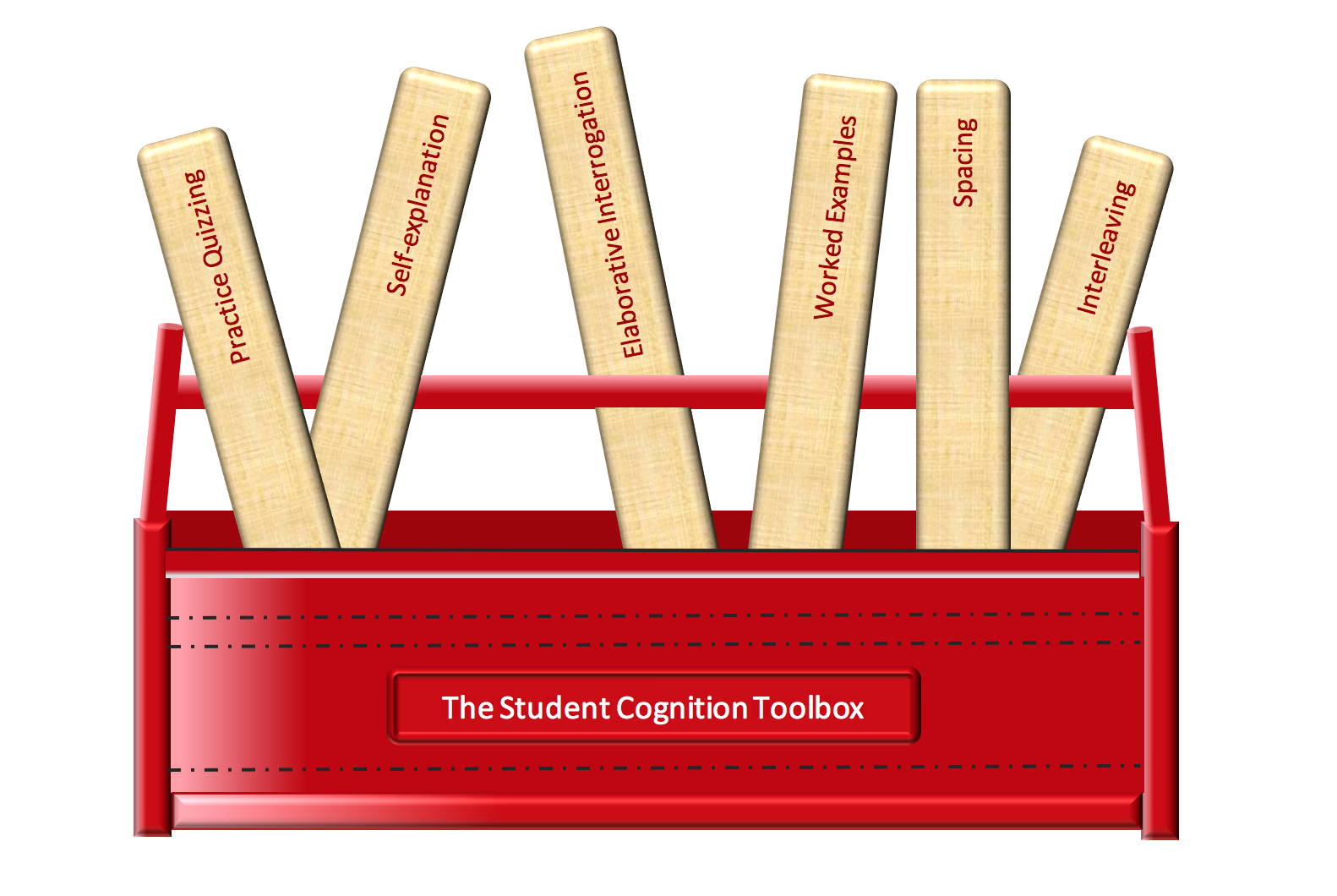This course offers students an engaging, interactive introduction to the essential topics in psychology.
Introduction to Psychology
$25
- Description
- What students will learn
- Learning objectives by module
- Course assessments, activities, and outline
- Other course details
- System requirements
- Included instructor tools
Description
As the name suggests, Introduction to Psychology offers students an engaging introduction to the essential topics in psychology. Throughout this study of human behavior and the mind, you will gain insight into the history of the field of psychology, as well as explore current theories and issues in areas such as cognition, motivation, and wellness. The course has been updated to align with DSM-5.
The importance of scientific methods and principles of research design is emphasized throughout this course and presented in a way that will enrich your study of individuals as thinking, feeling, and social beings.
This course is part of our Community College (CC-OLI) series. Although courses in this series are particularly well-suited to the needs of introductory community college courses, the course materials have been used successfully by learners and educators at a broad array of institutions.
Topics Covered:
- Research Methods
- Brains, Bodies, and Behavior
- Sensing and Perceiving
- Learning; Memory
- Language
- Intelligence
- Lifespan Development
- Emotion and Motivation
- Personality
- Psychology in Our Social Lives
- Wellness
- Psychological Disorders
- Treatment
- and Consciousness
It consists of 16 units, each with an average of four modules. The content of each module is driven by a set of student-centered learning objectives.
Along with expository text, videos, animations, interactive exercises, and self-assessments form the framework for students to actively discover, acquire, and personally relate to the concepts and ideas offered in this course. For example, students will actively encounter material through “Learn By Doing” activities that facilitate and support learning with hints and immediate, targeted feedback. Coupled with these activities are “Did I Get This?” self-assessments that give students the opportunity to gauge their understanding of the material. Each module ends with a scored assessment.
All of the learning activities, self-assessments, and graded assessments feed data to the instructor’s Learning Dashboard, which you can use to analyze information regarding students’ mastery of the subject matter in terms of the learning objectives.
What students will learn
Topics Covered:
- Research Methods
- Brains, Bodies, and Behavior
- Sensing and Perceiving
- Learning; Memory
- Language
- Intelligence
- Lifespan Development
- Emotion and Motivation
- Personality
- Psychology in Our Social Lives
- Wellness
- Psychological Disorders
- Treatment
- and Consciousness
Learning objectives by module
Unit 2: Introduction
- Module 1: Welcome to Psychology
- Distinguish different types of goals for the application of psychology to the real world.
- Survey the topics covered in the course and organize them according to general themes.
- Module 2: History and Perspectives
- Distinguish and apply some of the important questions that concern psychologists.
- Distinguish between the contributions of philosophy, the physical sciences, and the six early schools of psychology to the field of psychology.
- Explain the major perspectives of contemporary psychology and how they are interconnected.
- Identify some of the disciplines and types of work that psychologists perform in the field of psychology and explore the APA website.
Unit 3: Methods
- Module 3: Scientific Method
- Describe the five steps of the scientific method and identify examples of each step.
- Distinguish between basic and applied research.
- Identify characteristics of a hypothesis and distinguish its conceptual variables from operational definitions used in a research study.
- Identify ethical violations in research conducted with humans and animals.
- Module 4: Research Designs
- Describe the correlational research design, its purpose, advantages and disadvantages of its results from causal variables.
- Describe the experimental and quasi-experimental research designs, the purposes, advantages and disadvantages of the results of causal inferences for each design.
- Describe the threats to internal validity of research such as confounding variables and experimenter bias, and the threats to external validity of research such as generalization.
- Describe the three types of descriptive research design (case studies, surveys and naturalistic observation) and the purpose, advantages and disadvantages of each type.
Unit 4: Brains, Bodies, and Behavior
- Module 5: Neurons: The Building Block of the Nervous System
- Identify the basic structures of a neuron, the function of each structure, and how messages travel through the neuron.
- Identify the functions of synapses.
- Identify what the myelin sheath is, where it is located, and what its role is within the nervous system.
- Name the major neurotransmitters, identify what they do, and understand why they are important.
- Module 6: Brain Regions
- Explain and define the concepts brain neuroplasticity, neurogenesis, and brain lateralization.
- Identify and describe the structures and functions of the “old brain” and its influence on behavior.
- Identify and describe the structures and functions of the cerebral cortex, including the four lobes and two hemispheres.
- Identify and describe the structures and functions of the limbic system.
- Module 7: Methods for Studying the Brain
- Compare the two approaches (cadaver and lesion studies) and the five methods (single-unit microelectrode, EEG, PET scan, fMRI, and TMS) that scientists use to study brain structure and functions.
- Distinguish how each method is used to learn about brain activity and treat brain abnormalities.
- Module 8: The Nervous System and the Endocrine System
- Describe the endocrine system and explain its primary responsibilities within your body.
- Describe the major parts of the nervous system and their functions.
Unit 5: Sensing & Perceiving
- Module 9: Introduction to Sensing & Perceiving
- Apply and distinguish the concepts of sensation and perception.
- Define and apply basic concepts of sensory psychophysics: Apply signal detection analysis to analysis of a sensory experience.Explain the concept of just noticeable difference (JND) and apply it to analysis of sensory judgments.
- Explain the concept of transduction for each of the primary sensory systems.
- Module 10: Seeing: The Visual System
- Explain how wavelength is related to the visual spectrum.
- Identify cues for the perception of motion and use them to explain motion illusions.
- Identify cues used to perceive depth and draw conclusions about the origins of depth perception based on research. Draw conclusions about the origin of depth perception based on research with the visual cliff.Define monoculor and binoculor depth cues.
- Identify the physical properties of light that give rise to color vision and explain how color is processed by the visual system. Identify the properties of color.Differentiate among theories of color vision.
- Identify the structures of the eye and describe the function of each. Determine those structures of the eye that cause nearsightedness and farsightedness.
- Identify the structures of the neural pathway of vision and describe the sequence of processing that occurs in these structures.
- List the Gestalt principles of form perception and explain how they organize our sensory experience.
- Module 11: Audition & Other Senses
- Describe the gate-control theory of pain.
- Describe the physical stimulus for hearing and the factors that determine the pitch and loudness of a sound.
- Describe the primary structures of the ear and the pathway of auditory information processing.
- Distinguish between conductive and sensorineural hearing loss.
- Distinguish between the frequency theory and place theory of hearing.
- Summarize the process of transduction for the senses of taste, smell, touch, and proprioception.
- Module 12: Perception: Interpreting Sensation Based On Knowledge
- Explain how perceptual illusions can allow us to explore perception. Describe the Müeller-Lyer illusion.Describe the Ebbinghaus and moon illusions.Describe the Hering illusion.Describe the Ponzo illusion.
- Explain perceptual constancy and explain how it affects perception.
- Explain selective attention and explain how it affects perception.
- Explain sensory interaction and provide examples. Describe the McGurk effect and show how it exemplifies sensory interaction.Describe synesthesia and show how it exemplifies sensory interaction.
Unit 6: Learning
- Module 13: Classical Conditioning
- Describe the processes of learning in classical conditioning.
- Explain how complex chains of responses can be created through second-order conditioning.
- Explain how phobias develop.
- Explain the conditions leading to extinction and spontaneous recovery.
- Explain the processes of generalization and discrimination.
- Module 14: Operant Conditioning
- Distinguish among the main types of reinforcement and punishment and relate them to the Law of Effect.
- Distinguish among the various schedules of reinforcement.
- Distinguish between classical conditioning and operant conditioning.
- Explain the process of shaping and apply it to examples.
- Module 15: Learning By Insight and Observation
- Define latent learning and explain how Tolman studied latent learning in a laboratory experiment.
- Distinguish between learning by insight and trial-and-error learning.
- Distinguish observational learning and learning by trial-and-error, and explain how Bandura studied observational learning.
- Explain how observational learning has implications for understanding the effects of television and video games on behavior.
Unit 7: Memory
- Module 16: Types and Stages of Memory
- Compare and contrast implicit and explicit memory.
- Describe short-term memory and explain how working memory processes information within it.
- Explain the function and duration of eidetic, echoic, and iconic as a part of sensory memory.
- Module 17: How We Remember: Cues to Improving Memory
- Describe long-term memory.
- Describe retrieval and the phenomena that can affect it.
- Discuss what contributions Ebbinghaus’s memory research makes to improving memory.
- Explain how elaborative encoding improves memory storage.
- Module 18: The Biology of Memory
- Describe how neurons change to create memory.
- Distinguish the functions of the hippocampus, amygdala, and cerebellum.
- Module 19: Accuracy and Inaccuracy in Memory and Cognition
- Contrast the folk opinion that what people experience is accurate with the numerous scientific findings showing that people are quite susceptible to various biases.
- Describe heuristics, algorithms, and counterfactual thinking.
- Describe the misinformation effect, source monitoring, and overconfidence.
- Estimate the likelihood of the occurrence of a certain behavior given sufficient background information.
- Explain and give examples of causes of expectation-based inaccuracies in cognition, such as schematic processing, confirmation bias, functional fixedness, and salience.
Unit 8: Language
- Module 20: Communicating With Others: The Development and Use of Language
- Describe the steps an infant goes through in acquiring the ability to say words.
- Distinguish between the claims of two major theories of language acquisition.
- Explain the effect of bilingualism on cognitive development.
- Explain what animal studies tell us about the ability of animals to learn language.
- Identify the basic components of language.
- Identify the primary brain regions associated with language, and identify the function of each.
Unit 9: Intelligence
- Module 21: Defining and Measuring Intelligence
- Analyze how intelligence is measured using various types of tests to include intelligence, achievement and aptitude tests. Explain the Flynn effect and how it was discovered.Explain the concept of intelligence quotient and how it is calculated.Compare the constructs of reliability, validity and standardization required for a well-developed test.
- Analyze the different concepts of intelligence and types of intelligence to include general intelligence, specific intelligences, fluid intelligence and crystallized intelligence.
- Describe early and current attempts at measuring intelligence and identify the psychologist who made contributions to the field of intelligence.
- Module 22: Bell Curve
- Compare the extremes of intelligence (i.e., mental retardation and giftedness) and describe how they relate to the normal distribution.
- Use the normal distribution to determine the percentages of people with IQ scores in low, medium, and high parts of the scale.
- Module 23: Sternberg & Gardner
- Describe the primary theories of multiple intelligences.Describe Sternberg’s triarchic theory of intelligence, including the three different kinds of reasoning processes.Describe Gardner’s theory of multiple intelligences, including the distinct types of intelligence that characterize different forms of intelligent behavior.
- Explain the concept of emotional intelligence and how it differs from traditional intelligence.Define emotional intelligence.
- Explain the relationship between intelligence and creativity.Distinguish between convergent thinking and divergent thinking.
- Module 24: Issues and Controversies Related to Intelligence
- Describe the Flynn effect.
- Distinguish entity from incremental theories about intelligence.
- Explain how stereotype threat is used to interpret suboptimal performance on IQ tests.
- Identify factors related to racial differences in IQ.
- Identify the similarities and differences between the IQ distributions for men and women.
Unit 10: Lifespan Development
- Module 25: Introduction to Lifespan Development
- Define developmental psychology.
- Module 26: Prenatal and Early Development
- Define and describe the stages of prenatal development and some factors that can harm a developing fetus during pregnancy.
- Module 27: Cognitive Development In Childhood
- Define and apply the cognitive processes of assimilation and accommodation to understand our world.
- Define and differentiate various infant reflexes.
- Identify Piaget’s four stages of cognitive development and how they can be applied to understand children’s development.
- Identify the major features of Vygotsky’s sociocultural theory of cognitive development.
- Module 28: Social & Personality Development in Children
- Define the concept of temperament and distinguish the different temperamental styles.
- Describe the early signs of self-awareness, including self-concept, gender awareness, and social comparison, that emerge during infancy and throughout early childhood.
- Explain the concept of attachment and its different styles, and describe research related to it, including the early studies by Harlow and Harlow and more recent work with the Strange Situation Classification created by Ainsworth.
- List the different parenting styles and identify characteristics of each type.
- Module 29: Development During Adolescence
- Analyze the concepts of moral dilemma and moral reasoning and how a person develops morality: Apply the concepts of moral dilemma, morality, and moral reasoning.Using Kohlberg’s theory of moral development, apply the three levels to the moral development of persons at various ages and cognitive development.Identify the criticisms of Kohlberg’s theory of moral development.
- Describe the basic changes to the body that occur during adolescence: Describe the events that mark the beginning and ending of puberty for boys and girls.List primary and secondary sex characteristics for boys and girls.Distinguish primary and secondary sex characteristics from one another.
- Describe the period of adolescence and typical behaviors of adolescence.
- Identify changes in cognitive processes during adolescence: List the cognitive processes that continue to mature in adolescence.Identify the stage of Piaget’s theory relevant to adolescents, and understand the implications for cognitive development.Define the concept of adolescent egocentrism.
- Identify important changes to the brain during adolescence: Identify brain regions that continue to mature into adolescence.Explain the characteristics associated with the later development of the prefrontal cortex.
- Use Marcia’s theory to describe various ways identity can develop during adolescence.
- Module 30: Adulthood: Early, Middle, and Late
- Describe physical and psychological changes typically occurring during middle and late adulthood.Define the characteristics and physical and psychological consequences of menopause.List cognitive abilities that appear to naturally change (for better or worse) with aging.Distinguish between crystallized and fluid intelligence.
- Describe social changes that commonly occur during early and middle adulthood.
- Explain what dementia is and some of the prominent forms it can take (e.g., Alzheimer’s disease).
- Identify and apply the two conflict stages in Erikson’s theory that relate to the early and middle adulthood stages.
- List and evaluate Kübler-Ross’s five stages of grief (denial, anger, bargaining, depression, acceptance).
Unit 11: Emotion and Motivation
- Module 31: Experience of Emotion
- Apply the concept of the misattribution of arousal.
- Classify emotions conveyed through the face, body, and text.
- Classify events according to the slow and fast emotional pathways.
- Compare and contrast the Cannon-Bard, James-Lange, and Schachter-Singer theories of emotion. Differentiate emotional responses according to these three theories.
- Differentiate between basic and secondary emotions and identify characteristics of secondary emotions.
- Distinguish between motivation and emotion, identify the stages of emotional and motivational responses, and apply those stages to everyday experiences.
- Module 32: Positive Emotions
- Define the relationship between money and happiness.
- Describe affective forecasting.
- Describe the role of relationships and social support in happiness.
- Explain optimism, self-efficacy, hardiness and describe their effects.
- Module 33: Human Motivation
- Describe eating disorders.
- Describe the variations and origins of sexual behavior and orientation.
- Discuss arousal and attraction.
- Distinguish the concepts of motivation: drives, goals, homeostasis, intrinsic and extrinsic motivation.
- Explain the physiology of hunger.
Unit 12: Personality
- Module 34: Personality and Behavior: Approaches and Measurement
- Describe the primary trait theories of personality and explain the strengths and limitations of the trait approach to understanding personality.
- Distinguish and critique the early approaches to assessing personality.
- Distinguish between self-report inventories and projective tests that have been used to assess personality and psychological disorders.
- Module 35: The Origins of Personality
- Describe the major concepts of the humanistic approach, as well as the strengths and limitations of this approach to understanding personality.
- Describe the major concepts of the psychodynamic approach, as well as the strengths and limitations of this approach to explaining personality.
- Summarize the contributions of the neo-Freudians.
- Module 36: Is Personality More Nature or More Nurture? Behavioral and Molecular Genetics
- Describe the methods of behavioral genetics studies and the conclusions that we can draw from them about the determinants of personality.
- Explain how molecular genetics research helps us understand the role of genetics in personality.
Unit 13: Psychology in Our Social Lives
- Module 37: Social Cognition: Making Sense of Ourselves and Others
- Define self-fulfilling prophecy and describe how the process occurs.
- Define the concept of attitude and identify the conditions under which attitudes have a strong impact on actions.
- Define the key factors involved in our initial attraction to other people and in the quality of close relationships.
- Describe the process of causal attribution and the dangers of the fundamental attribution error.
- Distinguish between the concepts of stereotyping, prejudice, and discrimination.
- Explain how behaviors can influence attitudes through the process of self-perception and cognitive dissonance.
- Module 38: Interacting With Others: Helping, Hurting, and Conforming
- Describe Milgram’s controversial research on obedience, and discuss its implications for understanding our susceptibility to social influence.
- Describe the results of research on conformity, and distinguish between normative and informational social influence.
- Explain the factors that influence human altruism, including reciprocal altruism and diffusion of responsibility.
- Identify the causes of human aggression, including emotional, situational, and cultural factors.
- Module 39: Working With Others: The Costs and Benefits of Social Groups
- Describe conditions in which the presence of others is likely to result in social facilitation, social inhibition, and social loafing.
- Explain the concept of groupthink and the conditions that contribute to its occurrence.
Unit 14: Wellness
- Module 40: Having Balance in Your Life
- Describe the concept of wellness and define homeostasis.
- Describe the primary characteristics, or dimensions, of wellness.
- Recognize that maintaining a balanced life and experiencing wellness are active, lifelong endeavors.
- Module 41: Maintaining Balance and Optimal Wellness in Your Life
- Compare and contrast the impact different activities and lifestyle choices have on wellness.
- Explain the relationship between wellness and the mind-body connection.
- Identify and distinguish characteristics of different therapies, modalities, and practices (choose specific ones).
- Module 42: Being Out of Balance
- Assess how being out of balance manifests physically.
- Categorize how states of imbalance are evidenced socially.
- Describe characteristics of an imbalanced state of being.
- Examine how imbalance is displayed emotionally.
- Module 43: Stress
- Define stress and differentiate between everyday stress, extreme stress, and prolonged stress.
- Describe emotion regulation and, more specifically, its relationship to stress.
- Differentiate between the stress responses of “fight-or-flight” and “tend-and-befriend.”
- Identify specific physiological and behavioral responses to stress.
- Recognize the benefits of making choices that help to manage stress.
- Recognize when stress can be helpful or be a positive emotion.
- Module 44: Pain Management
- Describe the main physiological components of chronic pain.
- Differentiate the primary features of several approaches to pain management.
- Examine the common effects of chronic pain on wellness.
- Recognize that cultural influences play a role in the perception of pain.
- Recognize that the “experience” of chronic pain is the result of both physiology and psychological perception.
- Module 45: Mindfulness
- Characterize your own experiences doing a mindfulness exercise.
- Define mindfulness and describe the primary benefits of practicing mindfulness.
- Identify the effects that practicing mindfulness can have on attention and focus.
- Identify the importance of self-care and wellness as they relate to personal productivity.
- Recognize the influence of eastern practices on modern day psychology.
Unit 15: Disorders
- Module 46: Defining Psychological Disorders
- Define important terms related to psychological disorders (prevalence and comorbidity).
- Define psychological disorder.
- Describe the biopsychosocial model of psychological disorder.
- Describe the stigma of psychological disorders and their impact on those who suffer from them.
- Understand what the DSM is and how it defines a psychological disorder.
- Module 47: Anxiety, Obsessive-Compulsive, and Posttraumatic Stress Disorders
- Describe the features and characteristic symptoms of anxiety disorders (generalized anxiety disorder, panic disorder, phobias), obsessive-compulsive disorder and posttraumatic stress disorder; differentiate these anxiety disorders from each other.
- Identify and differentiate the underlying causes for these anxiety disorders (generalized anxiety disorder, panic disorder, phobias), obsessive-compulsive disorder and posttraumatic stress disorder.
- Module 48: Mood Disorders
- Describe the characteristic symptoms of mood disorders (major depression, dysthymia, bipolar disorder) and differentiate the mood disorders from each other.
- Differentiate among different causes of mood disorders.
- Module 49: Schizophrenia
- Describe the causes of schizophrenia.
- Describe the characteristic symptoms of schizophrenia.
- Module 50: Personality Disorders
- Define personality disorder.
- Describe the characteristic symptoms of personality disorders, particularly borderline personality disorder and antisocial personality disorder.
- Differentiate the clusters of personality disorders.
- Module 51: ADHD and Autism Spectrum Disorder
- Describe the diagnostic controversies associated with these neurodevelopmental disorders.
- Describe the symptoms of neurodevelopmental disorders (ADHD and Autism).
- Module 52: Dissociative Disorders
- Describe the controversy and research evidence surrounding dissociative identity disorder.
- Describe the essential nature of dissociative disorders.
- Identify and differentiate the symptoms of dissociative amnesia, depersonalization/derealization disorder, and dissociative identity disorder.
Unit 16: Treatment
- Module 53: Psychotherapy
- Distinguish among the three general approaches to treatment: the psychological, biomedical, and social approaches.
- Distinguish between theories based on their descriptive features (the several types of therapy).
- Explain how behavioral and cognitive therapy can be combined into cognitive-behavioral therapy.
- Explain the characteristics of combined (eclectic) therapies.
- Identify and explain the basic characteristics of the forms of therapy discussed in the text: psychodynamic therapy, humanistic therapy, behavioral therapy, and cognitive therapy.
- Identify the initial steps in seeking psychological therapy, including how a diagnosis is made and what the client has a right to know before therapy starts.
- Interpret a graphic representation (pie chart) that communicates quantitative information (indicate percentages of therapists with various therapeutic orientations).
- Module 54: Biomedical
- Classify the different types of medications used in the treatment of mental disorders and explain how they each work to reduce symptoms.
- Describe brain intervention methods and under what circumstances they may be used to treat patients with mental disorders.
- Module 55: Social
- Describe the goals of community mental health services.
- Explain the advantages of group therapy and self-help groups for treating disorder.
- Module 56: Prevention
- Describe the methods used to study the effectiveness of treatments for mental disorder.
- Describe the relative effectiveness of psychological and biological treatments for mental disorder.
Unit 17: Consciousness
- Module 57: Introduction to Consciousness
- Discuss the difference between monism and dualism, and understand why monism must be assumed in order to study psychology.
- Know the definition of consciousness, and understand how it applies to modern-day psychological principles such as theories concerning automatic (or autonomic) and controlled behaviors and implicit and explicit memory.
- Review Freud’s theories on conscious and unconscious behaviors.
- Module 58: Sleeping and Dreaming Revitalize Us for Action
- Analyze the costs of sleep deprivation.
- Discuss how sleep research can apply to everyday life.
- Explain the similarities and differences among the various theories of dreaming.
- Learn the different levels of sleep that occur during a normal night, and know the characteristics of each phase.
- Review the disorders that affect sleep.
- Module 59: Altering Consciousness With Psychoactive Drugs
- Describe the different characteristics of psychoactive drugs, including their dangers, and identify the influences of these drugs on consciousness and behaviors.
- Describe the evidence regarding the dangers of recreational drugs, and identify why some individuals use recreational drugs.
- Describe the major classes of psychoactive drugs, and identify what classes individual drugs belong in.
Course assessments, activities, and outline
UNIT 1: Learning Strategies
UNIT 2: Introduction
Module 1: Welcome to Psychology
Checkpoint: Welcome to Psychology
Module 2: History and Perspectives
Checkpoint: History and Perspectives
UNIT 3: Methods
Module 3: Scientific Method
Checkpoint: Scientific Method
Module 4: Research Designs
Checkpoint: Research Designs
UNIT 4: Brains, Bodies, and Behavior
Module 5: Neurons: The Building Block of the Nervous System
Checkpoint: Neurons: The Building Blocks of the Nervous System
Module 6: Brain Regions
Checkpoint: Brain Regions
Module 7: Methods for Studying the Brain
Checkpoint: Methods for Studying the Brain
Module 8: The Nervous System and the Endocrine System
Checkpoint: The Nervous System and the Endocrine System
UNIT 5: Sensing & Perceiving
Module 9: Introduction to Sensing & Perceiving
Checkpoint: Introduction to Sensing & Perceiving
Module 10: Seeing: The Visual System
Checkpoint: Seeing: The Visual System
Module 11: Audition & Other Senses
Checkpoint: Audition & Other Senses
Module 12: Perception: Interpreting Sensation Based On Knowledge
Checkpoint: Perception: Interpreting Sensation Based On Knowledge
UNIT 6: Learning
Module 13: Classical Conditioning
Checkpoint: Classical Conditioning
Module 14: Operant Conditioning
Checkpoint: Operant Conditioning
Module 15: Learning By Insight and Observation
Checkpoint: Learning By Insight and Observation
UNIT 7: Memory
Module 16: Types and Stages of Memory
Checkpoint: Types and Stages of Memory
Module 17: How We Remember: Cues to Improving Memory
Checkpoint: How We Remember: Cues to Improving Memory
Module 18: The Biology of Memory
Checkpoint: The Biology of Memory
Module 19: Accuracy and Inaccuracy in Memory and Cognition
Checkpoint: Accuracy and Inaccuracy in Memory and Cognition
UNIT 8: Language
Module 20: Communicating With Others: The Development and Use of Language
Checkpoint: Communicating with Others: The Development and Use of Language
UNIT 9: Intelligence
Module 21: Defining and Measuring Intelligence
Checkpoint: Defining and Measuring Intelligence
Module 22: Bell Curve
Checkpoint: Bell Curve
Module 23: Sternberg & Gardner
Checkpoint: Sternberg & Gardner
Module 24: Issues and Controversies Related to Intelligence
Checkpoint: Issues and Controversies Related to Intelligence
UNIT 10: Lifespan Development
Module 25: Introduction to Lifespan Development
Checkpoint: Introduction to Lifespan Development
Module 26: Prenatal and Early Development
Checkpoint: Prenatal and Early Development
Module 27: Cognitive Development In Childhood
Checkpoint: Cognitive Development in Childhood
Module 28: Social & Personality Development in Children
Checkpoint: Social & Personality Development in Children
Module 29: Development During Adolescence
Checkpoint: Development During Adolescence
Module 30: Adulthood: Early, Middle, and Late
Checkpoint: Adulthood: Early, Middle, and Late
UNIT 11: Emotion and Motivation
Module 31: Experience of Emotion
Checkpoint: Experience of Emotion
Module 32: Positive Emotions
Checkpoint: Positive Emotions
Module 33: Human Motivation
Checkpoint: Human Motivation
UNIT 12: Personality
Module 34: Personality and Behavior: Approaches and Measurement
Checkpoint: Personality and Behavior: Approaches and Measurement
Module 35: The Origins of Personality
Checkpoint: The Origins of Personality
Module 36: Is Personality More Nature or More Nurture? Behavioral and Molecular Genetics
Checkpoint: Is Personality More Nature or More Nurture? Behavioral and Molecular Genetics
UNIT 13: Psychology in Our Social Lives
Module 37: Social Cognition: Making Sense of Ourselves and Others
Checkpoint: Social Cognition: Making Sense of Ourselves and Others
Module 38: Interacting With Others: Helping, Hurting, and Conforming
Checkpoint: Interacting With Others: Helping, Hurting, and Conforming
Module 39: Working With Others: The Costs and Benefits of Social Groups
Checkpoint: Working With Others: The Costs and Benefits of Social Groups
UNIT 14: Wellness
Module 40: Having Balance in Your Life
Checkpoint: Having Balance in Your Life
Module 41: Maintaining Balance and Optimal Wellness in Your Life
Checkpoint: Maintaining Balance and Optimal Wellness in Your Life
Module 42: Being Out of Balance
Checkpoint: Being Out of Balance
Module 43: Stress
Checkpoint: Stress
Module 44: Pain Management
Checkpoint: Pain Management
Module 45: Mindfulness
Checkpoint: Mindfulness
UNIT 15: Disorders
Module 46: Defining Psychological Disorders
Checkpoint: Defining Psychological Disorders
Module 47: Anxiety, Obsessive-Compulsive, and Posttraumatic Stress Disorders
Checkpoint: Anxiety Disorders
Module 48: Mood Disorders
Checkpoint: Mood Disorders
Module 49: Schizophrenia
Checkpoint: Schizophrenia
Module 50: Personality Disorders
Checkpoint: Personality Disorders
Module 51: ADHD and Autism Spectrum Disorder
Checkpoint: ADHD & Autism Spectrum Disorder
Module 52: Dissociative Disorders
Checkpoint: Dissociative Disorders
UNIT 16: Treatment
Module 53: Psychotherapy
Checkpoint: Psychotherapy
Module 54: Biomedical
Checkpoint: Biomedical
Module 55: Social
Checkpoint: Social
Module 56: Prevention
Checkpoint: Prevention
UNIT 17: Consciousness
Module 57: Introduction to Consciousness
Checkpoint: Introduction to Consciousness
Module 58: Sleeping and Dreaming Revitalize Us for Action
Checkpoint: Sleeping and Dreaming Revitalize Us for Action
Module 59: Altering Consciousness With Psychoactive Drugs
Checkpoint: Altering Consciousness with Psychoactive Drugs
UNIT 18: Acknowledgments
Other course details
System requirements
OLI system requirements, regardless of course:
- internet access
- an operating system that supports the latest browser update
- the latest browser update (Chrome recommended; Firefox, Safari supported; Edge and Internet Explorer are supported but not recommended)
- pop-ups enabled
- cookies enabled
Some courses include exercises with exceptions to these requirements, such as technology that cannot be used on mobile devices.
This course’s system requirements:
- none listed (subject to change)
Included instructor tools
Instructors who teach with OLI courses benefit from a suite of free tools, technologies, and pedagogical approaches. Together they equip teachers with insights into real-time student learning states; they provide more effective instruction in less time; and they’ve been proven to boost student success.

